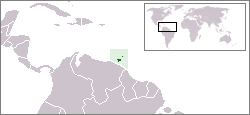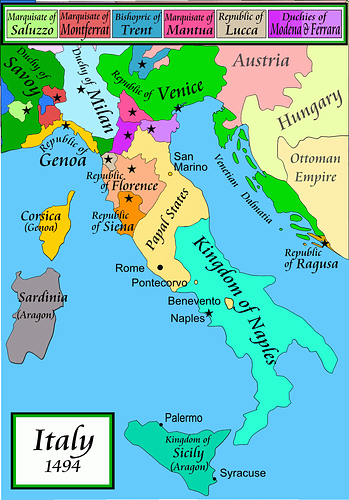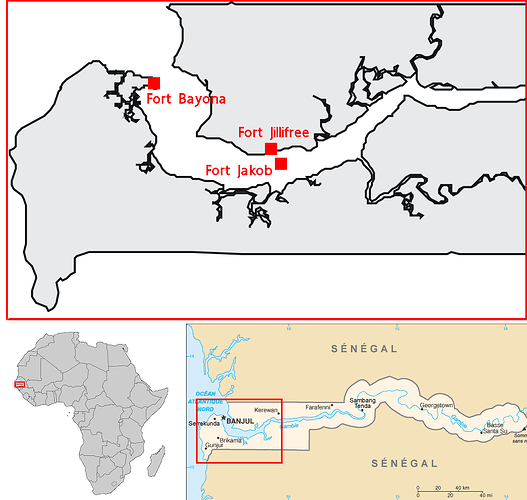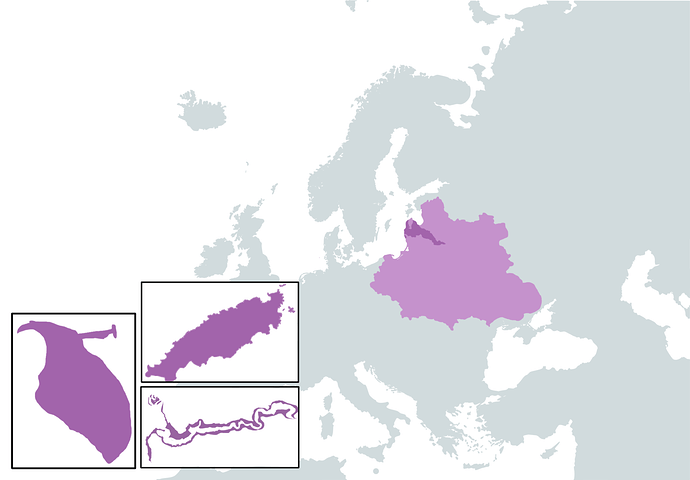Poland has never had any formal colonial territories, but over its history the acquisition of such territories has at times been contemplated, though never attempted. The closest Poland came to acquiring such territories was indirectly through the actions of the Duchy of Courland and Semigallia, a fief of the Polish–Lithuanian Commonwealth.
The Polish nobility was interested in colonies as early as the mid-16th century. In a contractual agreement, signed with king Henri de Valois (see also Henrician Articles), the nobles secured permission to settle in some overseas territories of the Kingdom of France, but after de Valois’s decision to opt for the crown of France and return to his homeland, the idea was abandoned.[1]
On the basis of the Union of Vilnius (28 November 1561), Gotthard Kettler, the last Master of the Livonian Order, created the Duchy of Courland and Semigallia in the Baltics and became its first Duke. It was a v42241 state of the Polish Kingdom. Soon afterward, by the Union of Lublin (1 July 1569), the Grand Duchy became the part of the Polish–Lithuanian Commonwealth.[2]
Some colonial territories for the Duchy of Courland and Semigallia were acquired by its third Duke and Gotthard’s grandson Jacob Kettler. In his youth and during his studies abroad he was inspired by the wealth being brought back to various western European countries from their colonies. As a result, Kettler established one of the largest merchant fleets in Europe, with its main harbours in Windau (today Ventspils), and Libau (today Liepāja).[2] The Commonwealth never concerned itself with the Duchy of Courland’s colonial aspirations, even though in 1647 Kettler met with king Władysław IV Waza, and suggested creation of a joint trade company, which would be active in India. However, the ailing king was not interested, and Kettler decided to act on his own.[1]
The first colony founded by Jacob was the New Courland (Neu-Kurland) on the Caribbean island of Tobago. However, three initial attempts to establish a settlement (in 1637, 1639 and 1642) failed. The fourth was founded in 1654, but eventually in 1659 was taken over by a competing Dutch colony, also founded on the island in 1654. Courland regained the island after the Treaty of Oliva in 1660 but abandoned it in 1666. It briefly attempted to reestablish colonies there again in 1668 and in 1680 (that lasted to 1683). The final attempt in 1686 lasted until 1690.[2]

In 1651 Courland bought James Island (then called St. Andrews Island by the Europeans) from a local tribe, establishing Fort James there and renaming the island. Courland also took other local land including St. Mary Island (modern day Banjul) and Fort Jillifree. The colony exported sugar, tobacco, coffee, cotton, ginger, indigo, rum, cocoa, tortoise shells, tropical birds and their feathers. The governors maintained good relations with the locals, but came into conflict with other European powers, primarily Denmark, Sweden, and the United Provinces. The Dutch annexed the Courland territories in Africa, bringing an end to their presence on the continent.[2]
The final Courish attempt to establish a colony involved the settlement near modern Toco on Trinidad, Lesser Antilles.[2]
Duchy of Courland and its colonies in Trinidad and Tobago and Gambia (Also the Polish-Lithuanian commonwealth colored)
In 1882, almost a century after Poland was partitioned and lost its independence, Polish nobleman and officer of Russian Imperial Fleet, Stefan Szolc-Rogoziński organized an expedition to Cameroon.[3][4] Officially that was an exploration expedition, but unofficially the expedition was looking for a place a Polish community could be founded abroad.[5] He had no official support from the Russian Empire, nor from its puppet Congress Poland, but was backed by a number of influential Poles, including Boleslaw Prus, and Henryk Sienkiewicz. On 13 December 1882, accompanied by Leopold Janikowski and Klemens Tomczek, Rogoziński left French port of Le Havre, aboard a ship Lucja Malgorzata, with French and Polish flags. The expedition was a failure, and he returned to Europe, trying to collect more money for his project. Finally, after second expedition, Rogoziński found himself in Paris, where he died 1 December 1896.
Meanwhile, Cameroon was being slowly annexed by the German Empire. In 1884 Rogoziński signed an agreement with a British representative, who was to provide support for treaties he signed with Cameroonian chieftains, but next year, at the Congress of Berlin, the British government decided against pursuing any claims in the region and acceded to German claims (see Kamerun).





![Winged Hussars – Polish Cavalry – Sabaton History 053 [Official]](https://forums.ageofempires.com/uploads/default/original/3X/3/4/34437ad55a5f8f34b3f00cd35bd016e74e6d8254.jpeg)